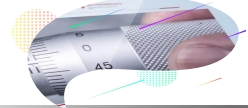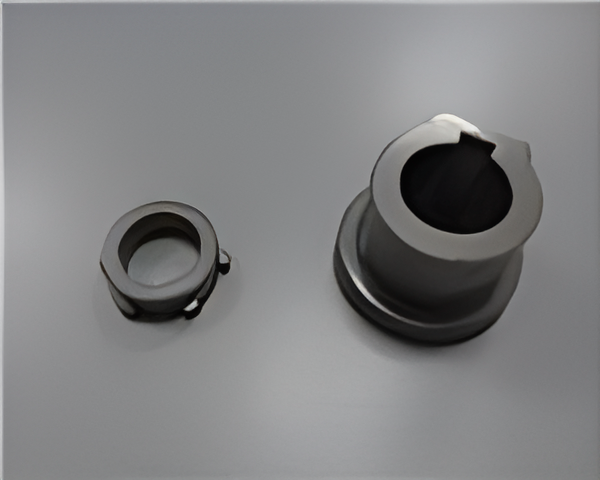Introduction
Metal Injection Molding (MIM) and Metal 3D Printing (Additive Manufacturing) represent highly competitive metal fabrication technologies. Both approaches offer cost-effective solutions for the production of small and intricate metal components. However, they each come with their own set of advantages and limitations, distinguishing them in the realm of metal manufacturing.
3D Printing A Closer Look

3D printing process
The 3D printing process, or additive manufacturing, builds three-dimensional objects layer by layer from digital models. Here’s how it works:
Design: Begin by creating a digital 3D model using CAD software.
Slicing: The model is sliced into thin layers using slicing software, then sent to the printer as instructions.
Printing: The printer follows these instructions to build the object layer by layer using various technologies like FDM or SLA.
Completion: Once all layers are printed, the object is finished, which can take minutes to days.
Post-processing: Some objects may need post-processing steps like removing support structures or sanding.
Overall, 3D printing offers versatility for creating complex designs with relative ease compared to traditional methods.
Types of 3D printing techniques
Fused Deposition Modeling (FDM): This technique involves melting thermoplastic filament and extruding it layer by layer to create the object.
Stereolithography (SLA): SLA uses a liquid resin that is cured by a UV laser layer by layer to form the object.
Selective Laser Sintering (SLS): In SLS, a laser selectively fuses powdered material, such as metal or plastic, layer by layer to create the object.
Digital Light Processing (DLP): DLP is similar to SLA but uses a different light source, such as a digital light projector, to cure the resin.
Binder Jetting: This technique involves depositing a liquid binding agent onto a powder bed, solidifying the powder layer by layer to form the object.
These are just a few examples of the various 3D printing techniques available, each with its own advantages and applications.
Advantages and disadvantages of 3D printing
Advantages:
- Design Flexibility: 3D printing allows for the creation of complex geometries and customized designs that are difficult or impossible to achieve with traditional manufacturing methods.
- Rapid Prototyping: It enables quick and cost-effective prototyping, reducing time-to-market for new products.
- Reduced Waste: Since 3D printing is an additive manufacturing process, it generates less material waste compared to subtractive manufacturing methods.
- On-Demand Production: 3D printing facilitates on-demand manufacturing, eliminating the need for large inventories and reducing storage costs.
- Customization: It enables the production of personalized products tailored to individual preferences or specific requirements.
Disadvantages:
- Limited Material Selection: The range of materials available for 3D printing is more limited compared to traditional manufacturing methods.
- Surface Finish: Parts produced by 3D printing may require post-processing to achieve desired surface finishes, adding time and cost.
- Lower Strength: 3D printed parts may have lower mechanical properties, such as strength and durability, compared to parts manufactured using traditional methods.
- Print Speed: 3D printing can be slower than traditional manufacturing processes, particularly for large or complex parts.
- Equipment Cost: The initial investment in 3D printing equipment and technology can be significant, especially for industrial-grade systems.

MIM harnesses the power of fine metal powders, thermoplastic, and wax binders. This unique blend undergoes a meticulous compounding process, resulting in a homogenous pelletized feedstock. What sets MIM apart is its ability to use this feedstock in an injection molding process akin to plastic, achieving unparalleled density and precision over large production runs.
Feedstock Preparation:
Metal powder mixed with binder.
Injection Molding:
Heating and injecting feedstock into mold cavity, forming green part with desired shape.
Debinding:
Removing binder through thermal or solvent methods.
Sintering:
Heating green parts to bond metal particles,resulting in dense metal part.
Advantages and disadvantages of MIM
Advantages of Metal Injection Molding (MIM):
Complex Geometries: Allows for the production of intricate and complex-shaped parts that are difficult or impossible to manufacture with traditional methods.
High Precision: Provides excellent dimensional accuracy and tight tolerances, ensuring consistent and precise parts.
Material Variety: Supports a wide range of metal materials, including stainless steel, titanium, and copper alloys, offering versatility in part properties and applications.
Cost-Effectiveness: Offers cost savings compared to traditional machining methods for small to medium-sized production runs, especially for complex parts.
High Material Utilization: Minimizes material waste by using powdered metal feedstock, resulting in efficient material utilization.
Disadvantages of Metal Injection Molding (MIM):
High Initial Costs: Requires significant upfront investment in tooling and equipment, making it less suitable for low-volume production or prototyping.
Longer Lead Times: The MIM process typically involves multiple steps, including debinding and sintering, leading to longer lead times compared to some other manufacturing methods.
Design Limitations: Certain design features, such as undercuts or thin walls, may be challenging to produce with MIM and may require additional processing or modifications.
Part Size Limitations: MIM is generally more suitable for small to medium-sized parts due to limitations in mold size and handling of larger components.
Material Constraints: While MIM supports a variety of metal materials, some exotic or specialized alloys may be challenging or impractical to process using this method.
Comparing 3D Printing and MIM

Overall, while 3D printing offers flexibility and customization, MIM provides higher part quality, greater material options, and cost-effectiveness for large-scale production.
Conclusion
Part quality and accuracy: MIM offers higher quality and accuracy, capable of producing intricate details and complex geometries, while 3D Printing provides moderate to high quality depending on technology and settings.
Material selection and versatility: MIM offers a wide range of metal materials, including steel, stainless steel, titanium, etc., whereas 3D Printing has a limited range of materials, mostly thermoplastics and some metals.
Cost considerations: Initial setup costs can be high for both methods, especially for metal 3D printing. However, MIM becomes more cost-effective for large production runs due to lower per-unit costs.
Production scalability and lead times: MIM is highly scalable for large production runs, with shorter lead times once tooling is complete. In contrast, 3D Printing has limitations in scalability due to build time constraints.
In MIM manufacturing, paying attention to the tolerances of metal parts is crucial. Metal injection molding can provide a more stable tolerance of ±0.3% in mass production, whereas MBJ can only offer a nominal tolerance of ±0.5%.
On the other hand, 3D printing, as a metal additive manufacturing method, offers greater design flexibility. It can create specific geometries that are not achievable with MIM.


